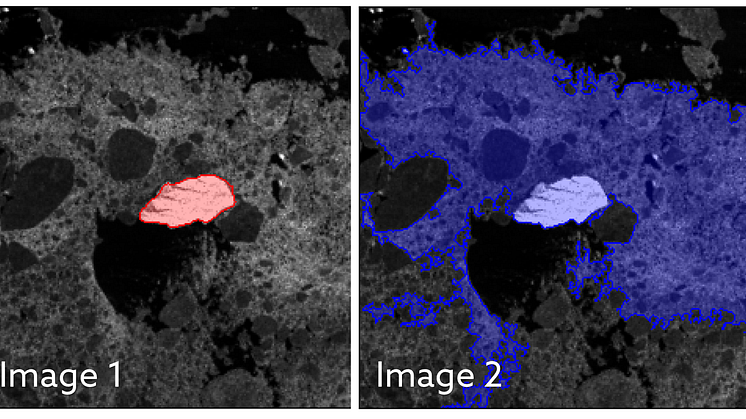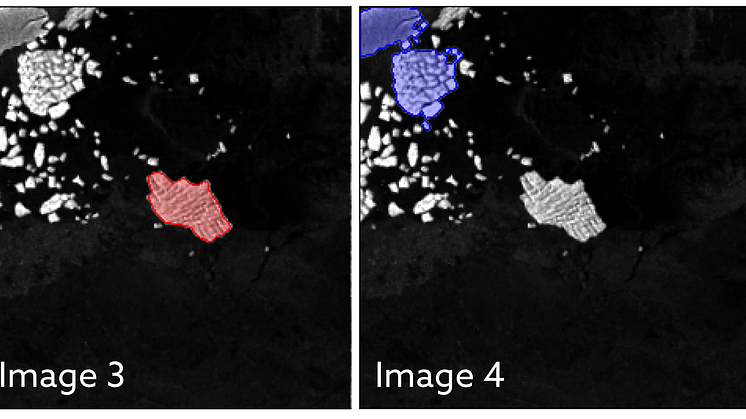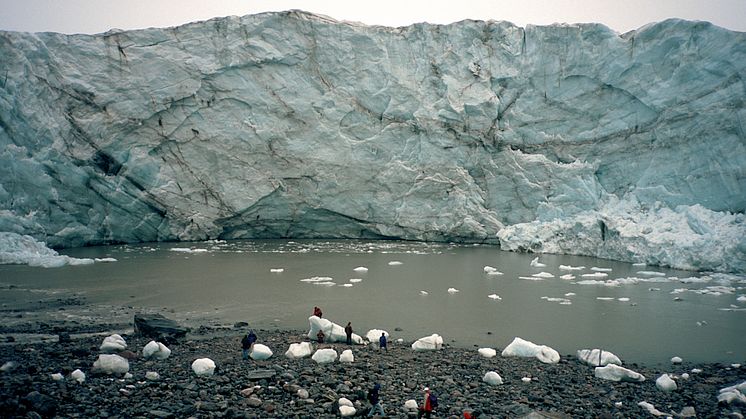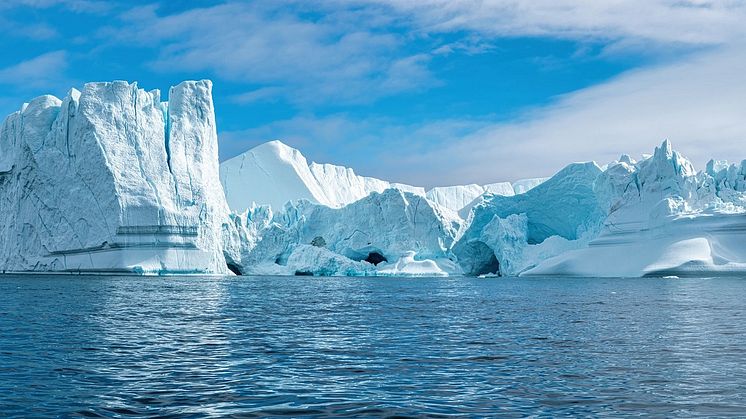
Press release -
AI can map giant icebergs from satellite images 10,000 times faster than humans
Scientists have trained an artificial intelligence (AI) system to accurately map the surface area and outline of giant icebergs captured on satellite images in just one-hundredth of a second.
It is a major advance on existing automated systems which struggle to distinguish icebergs from other features in satellite images.
Their findings are published today in leading journal The Cryosphere.
Icebergs have a significant impact on the polar environment and monitoring them is critical for both maritime safety and scientific study. They can be extremely large – in some cases the size of small countries – and can pose a risk to passing ships. As they melt, icebergs release nutrients and freshwater into the seas, and this can have an impact on marine ecosystems.
The study was led by Dr Anne Braakmann-Folgmann at the Centre for Polar Observation and Modelling, which recently moved to Northumbria University from the University of Leeds.
Using an algorithm called U-net – a type of neural network – Dr Braakmann-Folgmann and her colleagues “trained” a computer to accurately map the outline of icebergs from images taken by Sentinel-1 satellites operated by the European Space Agency.
Although manual – or human – interpretation of satellite images is more accurate, it can take several minutes to accurately outline a single iceberg. If that has to be repeated numerous times, the process quickly becomes time-consuming and laborious.
The algorithm uses an approach designed for manipulating images. By analysing the pixels in the image, it can determine the boundary or outline of objects, in this case it is identifying the outline of the iceberg.
The team also compared the effectiveness of the U-net algorithm to two other state-of-the-art algorithms currently used to map icebergs, known as k-means and Otsu, and programmed them to identify the biggest iceberg in a series of satellite images.
They tested all three algorithms on satellite images of seven huge icebergs, which were all between 54km2 and 1052km2. This equates to the icebergs being the same size as the city of Bern in Switzerland and Hong Kong. Up to 46 images of each iceberg were used that were taken over a six-year period.
Over a series of tests, the U-net algorithm clearly outperformed both k-means and Otsu and was more effective in delineating the outline of an iceberg.
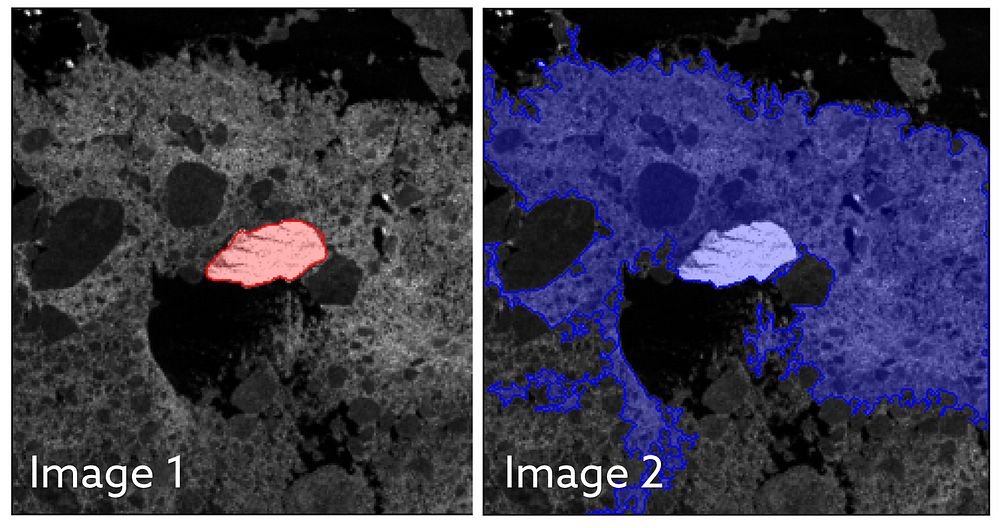
U-net showed an average of a 5% lower estimate of the area of an iceberg, whereas the k-means and Otsu algorithms returned average figures for iceberg area that were between 150% to 170% too large. It is believed that these algorithms were including sea ice and even nearby coastline in their calculations.
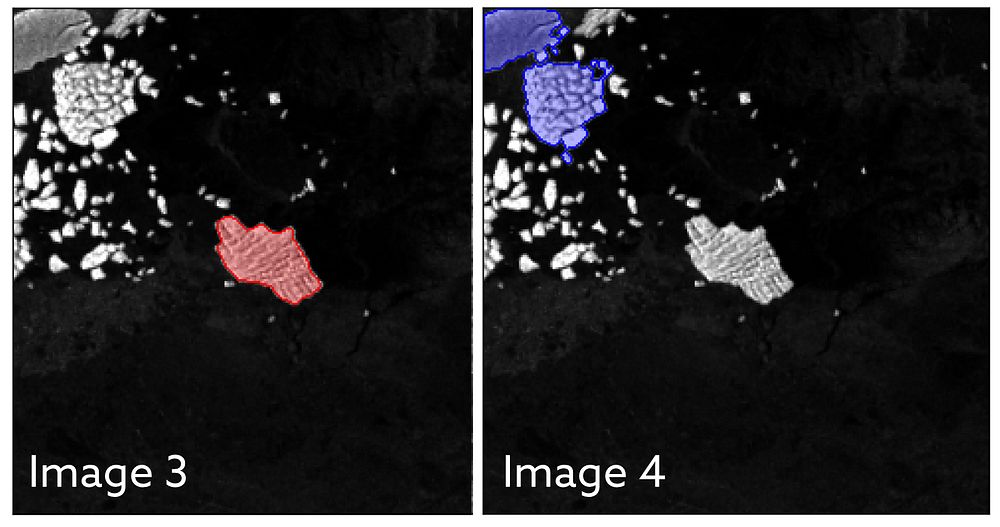
Professor Andrew Shepherd, Director of the Centre for Polar Observation and Modelling and Head of the Department of Geography and Environmental Sciences at Northumbria University was one of the co-authors of the study.
He said: "This study shows that machine learning will enable scientists to monitor remote and inaccessible parts of the world in almost real-time. And with machine learning, the algorithm will become more accurate as it learns from errors in the way it interprets a satellite image.”
Dr Braakmann-Folgmann said the technology could result in new services which provide information about the shape and size of giant icebergs. Current mapping services show only the midpoint or central location and length of icebergs. Interpretation by this new approach means their outline and area can be calculated.
“Icebergs exist in hard-to-reach parts of the world and satellites are not only a fantastic tool to observe where they are, they can help scientists understand the process of how they melt and eventually begin to break apart.
“Being able to automatically map iceberg extent with enhanced speed and accuracy paves the way for an operational service providing iceberg outlines on a regular, automated basis.
“Combining them with measurements of iceberg thickness, also enables scientists to monitor where giant icebergs are releasing vast quantities of freshwater into the oceans.”
The paper Mapping the extent of giant Antarctic icebergs with Deep Learning is published in The Cryosphere.
Northumbria University is home to one of the world’s leading groups in the studies of the interactions between ice sheets and oceans. The team of researchers are working to explore the future of ice sheets and glaciers worldwide in a warming world. This involves understanding the causes of ongoing changes in Antarctica, Greenland and alpine areas, as well as assessing future changes and resulting impacts on human environments globally.
The University was recently awarded £9 million to become a Centre for Doctoral Training in Artificial Intelligence. The funding from UK Research and Innovation will see Northumbria specialising in citizen-centred artificial intelligence, focusing on the inclusion of citizens in the design and evaluation of AI, helping to ensure this rapidly advancing technology works for everyone.
Topics
Categories
UNIVERSITY OF THE YEAR 2022 (Times Higher Education Awards)
Northumbria is a research-intensive university that unlocks potential for all, changing lives regionally, nationally and internationally. Find out more about us at www.northumbria.ac.uk
--- Please contact media.communications@northumbria.ac.uk with any media enquiries or interview requests ---







